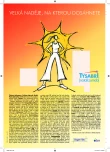Neurotransmitter Disorders in Childhood and Differential Diagnosis
Authors:
K. Szentiványi 1; H. Hansíková 1; J. Krijt 2; P. Ješina 1; M. Magner 1; J. Zeman 1; T. Honzík 1
Authors‘ workplace:
1. LF UK a VFN v Praze
Klinika dětského a dorostového lékařství
1; 1. LF UK a VFN v Praze
Ústav dědičných metabolických poruch
2
Published in:
Cesk Slov Neurol N 2010; 73/106(6): 656-662
Category:
Review Article
Overview
Neurotransmitter disorders constitute a group of rare neurometabolic diseases with heterogeneous symptomatology, mostly manifesting in early childhood. To date, ten enzyme deficiencies in the pathway of the biogenic amines have been described. The major clinical features are parkinsonism, dystonia, myoclonic epilepsy and spastic paraparesis. The diagnosis of neurotransmitter disorders is based almost exclusively on the quantitative determination of the neurotransmitters and/or their metabolites in the cerebrospinal fluid. Treatment options include administration of neurotransmitter precursors, including L-DOPA and 5-hydroxytryptophan, but the effects of treatment appear highly variable. The aim of this paper is to review the current state of knowledge of disorders of biogenic amine metabolism in infancy and childhood. We would like to present this to the professional community to encourage the inclusion of neurotransmitter disorders in the differential diagnosis of infants suspected of suffering from neurometabolic disease.
Sources
1. von Bohlen und Halbach O, Dermietzel R. Introduction. In: von Bohlen und Halbach O, Dermietzel R (eds). Neurotransmitters and neuromodulators. 1st ed. Weinheim: Wiley-VCH Verlag 2002 : 1–8.
2. Kandel ER. Elementary interactions between neurons: synaptic transmission. In: Kandel ER, Schwartz JH, Jessell TM (eds). Principles of Neural Science. 4th ed. New York: McGraw-Hill 2000 : 123–134.
3. Blackbaud Internet Solutions. [online]. Dostupné z: http://www.pndassoc.org/site/c.iuLWJdMRKpH/b.810295/k.8FC3/What_Are_PNDs.htm ke13.1.2009.
4. Pearl PL, Taylor JL, Trzcinski S, Sokohl A. The Pediatric Neurotransmitter Disorders. J Child Neurol 2007; 22(5): 606–616.
5. Blau N, Thöny B, Cotton RGH, Hyland K. Disorders of tetrahydrobiopterin and related biogenic amines. In: Scriver CR, Beaudet AL, Sly WS et al (eds). The metabolic and molecular bases of inherited disease. 8th ed. New York: McGraw-Hill 2001 : 1725–1776.
6. Hyland K. Biochemistry and physiology of biogenic amines. In: Hoffmann GF (ed). Diseases of Neurotransmission from Bench to Bed. 1st ed. Heilbronn: SPS Publications 2006 : 11–28.
7. Haavik J, Blau N, Thöny B. Mutations in human monoamine-related neurotransmitter pathway genes. Hum Mutat 2008; 29(7): 891–902.
8. Hyland K. Clinical utility of monoamine neurotransmitter metabolite analysis in cerebrospinal fluid. Clin Chem 2008; 54(4): 633–641.
9. Hyland K. Inherited disorders affecting dopamine and serotonin: critical neurotransmitters derived from aromatic amino acids. J Nutr 2007; 137 (Suppl 1): 1568–1575.
10. Chen L, Zhuang X. Transgenic mouse models of dopamine deficiency. Ann Neurol 2003; 54 (Suppl 6): S91–S102.
11. Pons R. The phenotypic spectrum of paediatric neurotransmitter diseases and infantile parkinsonism. J Inherit Metab Dis 2009; 32(3): 321–332.
12. Pons R, Ford B, Chiriboga CA, Clayton PT, Hinton V, Hyland K et al. Aromatic L-amino acid decarboxylase deficiency: clinical features, treatment, and prognosis. Neurology 2004; 62(7): 1058–1065.
13. Segawa M, Nomura Y, Nishiyama N. Autosomal dominant guanosine triphosphate cyclohydrolase I deficiency (Segawa disease). Ann Neurol 2003; 54 (Suppl 6): S32–S45.
14. Hoffmann GF, Assmann B, Bräutigam C, Dionisi-Vici C, Häussler M, de Klerk JB et al. Tyrosine hydroxylase deficiency causes progressive encephalopathy and dopa-nonresponsive dystonia. Ann Neurol 2003; 54 (Suppl 6): S56–S65.
15. Horvath GA, Stockler-Ipsiroglu SG, Salvarinova-Zivkovic R, Lillquist YP, Connolly M, Hyland K et al. Autosomal recessive GTP cyclohydrolase I deficiency without hyperphenylalaninemia: evidence of a phenotypic continuum between dominant and recessive forms. Mol Genet Metab 2008; 94(1): 127–131.
16. Swoboda KJ, Hyland K, Goldstein DS, Kuban KC, Arnold LA, Holmes CS et al. Clinical and therapeutic observations in aromatic L-amino acid decarboxylase deficiency. Neurology 1999; 53(3): 1205–1211.
17. de Rijk-van Andel JF, Gabreëls FJ, Geurtz B, Steenbergen-Spanjers GC, van Den Heuvel LP, Smeitink JA et al. L-Dopa-responsive infantile hypokinetic rigid parkinsonism due to tyrosine hydroxylase deficiency. Neurology 2000; 55(12): 1926–1928.
18. Giovanniello T, Leuzzi V, Carducci C, Carducci C, Sabato ML, Artiola C et al. Tyrosine hydroxylase deficiency presenting with a biphasic clinical course. Neuropediatrics 2007; 38(4): 213–215.
19. Senard JM, Rouet P. Dopamine beta-hydroxylase deficiency. Orphanet J Rare Dis 2006; 1 : 7.
20. Bezard E, Brotchie JM, Gross CE. Pathophysiology of levodopa-induced dyskinesia: potential for new therapies. Nat Rev Neurosci 2001; 2(8): 577–588.
21. Diepold K, Schütz B, Rostasy K, Wilken B, Hougaard P, Güttler F et al. Levodopa-responsive infantile parkinsonism due to a novel mutation in the tyrosine hydroxylase gene and exacerbation by viral infections. Mov Disord 2005; 20(6): 764–767.
22. Spada M, Ferraris S, Ferrero GB, Sartore M, Lanza C, Perfetto F et al. Monitoring treatment in tetrahydrobiopterin deficiency by serum prolactin. J Inherit Metab Dis 1996; 19(2): 231–233.
23. Collins FA, Murphy DL, Reiss AL, Sims KB, Lewis JG, Freund L et al. Clinical, biochemical, and neuropsychiatric evaluation of a patient with a contiguous gene syndrome due to a microdeletion Xp11.3 including the Norrie disease locus and monoamine oxidase (MAOA and MAOB) genes. Am J Med Genet 1992; 42(1): 127–134.
24. Assmann B, Surtees R, Hoffmann GF. Approach to the diagnosis of neurotransmitter diseases exemplified by the differential diagnosis of childhood-onset dystonia. Ann Neurol 2003; 54 (Suppl 6): S18–S24.
25. Hyland K. The lumbar puncture for diagnosis of pediatric neurotransmitter diseases. Ann Neurol 2003; 54(6): 13–17.
26. Chang YT, Sharma R, Marsh JL, McPherson JD, Bedell JA, Knust A et al. Levodopa-responsive aromatic L-amino acid decarboxylase deficiency. Ann Neurol 2004; 55(3): 435–438.
Labels
Paediatric neurology Neurosurgery NeurologyArticle was published in
Czech and Slovak Neurology and Neurosurgery

2010 Issue 6
Most read in this issue
- Spontaneous Regression of Sequestrated Lumbar Disc Herniation – Three Case Reports
- Assessment of State of Health and Capacity for Work in Post-Stroke Patients – Case Reports
- The Bristol Activities of Daily Living Scale BADLS-CZ for the Evaluation of Patients with Dementia
- Autisms
